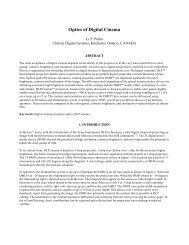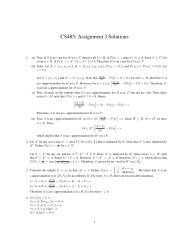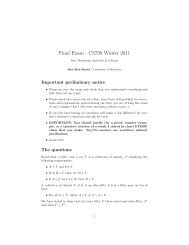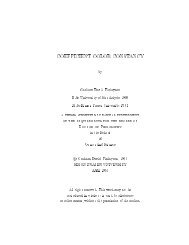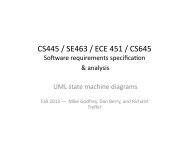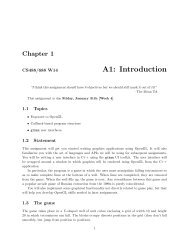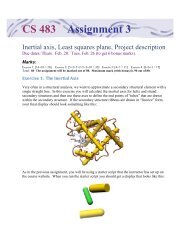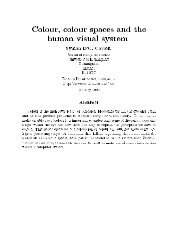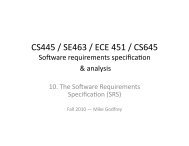Past Midterm and Exam Questions (PDF) - Student.cs.uwaterloo.ca ...
Past Midterm and Exam Questions (PDF) - Student.cs.uwaterloo.ca ...
Past Midterm and Exam Questions (PDF) - Student.cs.uwaterloo.ca ...
Create successful ePaper yourself
Turn your PDF publications into a flip-book with our unique Google optimized e-Paper software.
CS488/688 Introduction to Computer Graphi<strong>cs</strong> 11<br />
2. If we clip a polygon to a window, it is inadequate to merely perform repeated half-space<br />
clipping on each polygon line segment independently. Give an example illustrating why<br />
independent clipping of polygon line segments may fail to correctly clip a convex polygon. A<br />
picture alone is inadequate; you should also give a short answer describing the picture <strong>and</strong><br />
why it illustrates the problem, noting both the incorrectly clipped polygon <strong>and</strong> what the<br />
correctly clipped polygon should be.<br />
4.16 Line Clipping [Last Used: Fall 2012 Final]<br />
In assignment 2, you implemented a line clipping algorithm by repeatedly clipping to half-spaces.<br />
Suppose we want to clip a polygon to a rectangular window. One approach would be to just clip<br />
each line segment to the window independently, <strong>and</strong> use the resulting clipped line segments as our<br />
clipped polygon.<br />
Given an example illustrating that this algorithm may give an incorrect result.<br />
5 Colour<br />
5.1 Colour Coordinate Systems [Last Used: Spring 1986 Final]<br />
Name three colour coordinate systems <strong>and</strong> describe their defining axes. For each system, indi<strong>ca</strong>te<br />
the shape of the region containing the colours they <strong>ca</strong>n define.<br />
5.2 Additive <strong>and</strong> Subtractive Colour [Last Used: ?]<br />
Explain the difference between additive <strong>and</strong> subtractive colour mixing.<br />
(a) According to the opponent-colour theory of vision, what information is passed on to the brain<br />
from the eye <strong>and</strong> how is it generated from cone excitations?<br />
(b) Explain the relevance of opponent-colour theory to computer graphi<strong>cs</strong>.<br />
5.3 Colour Space Mapping [Last Used: Winter 1986 Final]<br />
The colours D, E, F are defined in terms of the R, G, B primaries as:<br />
D = 1.0R + 0.5G (1)<br />
E = 1.0R − 0.5B (2)<br />
F = 1.0R (3)<br />
(a) What are D, E, F values that produce an equivalent stimulus to the eye as R = 0.0, G = 1.0,<br />
<strong>and</strong> B = 1.0?<br />
(b) Write the equations that map from three values in DEF colour space into RGB colour space.<br />
(c) Can the colours D, E, F be considered as primaries? Justify your answer.





